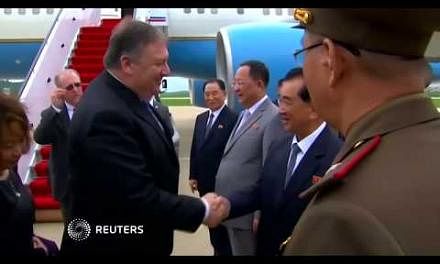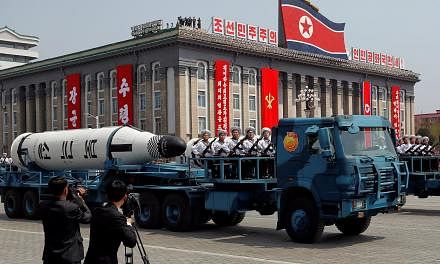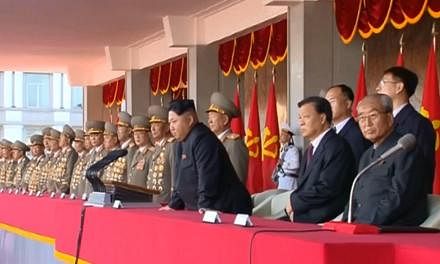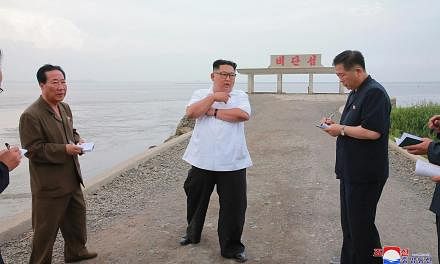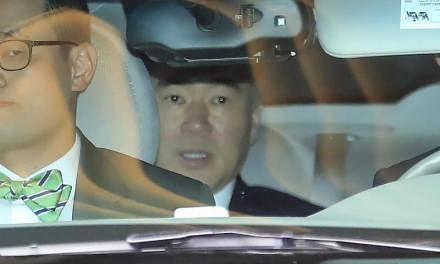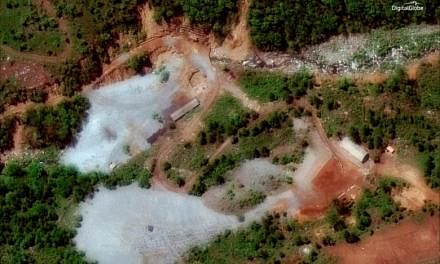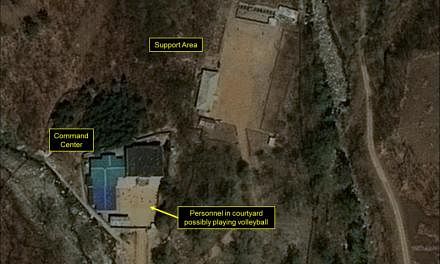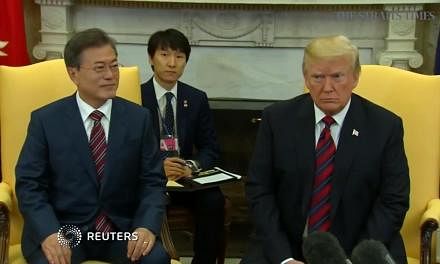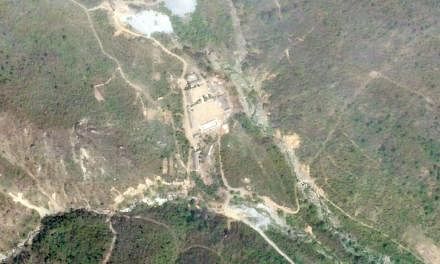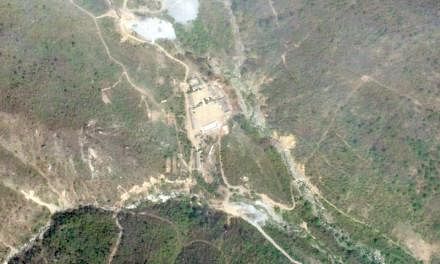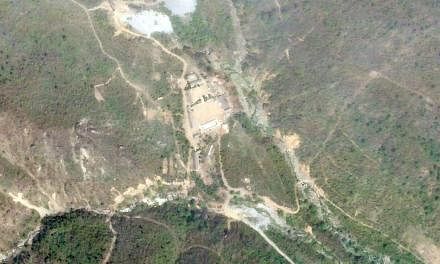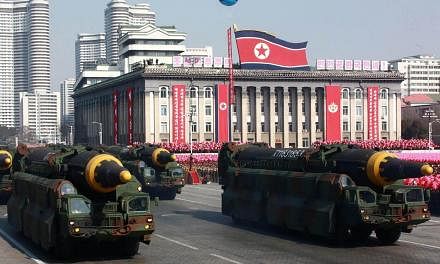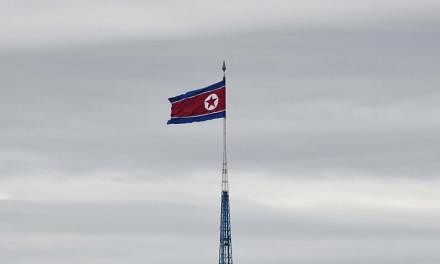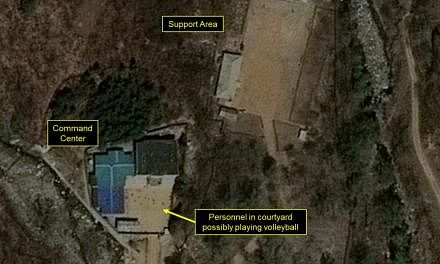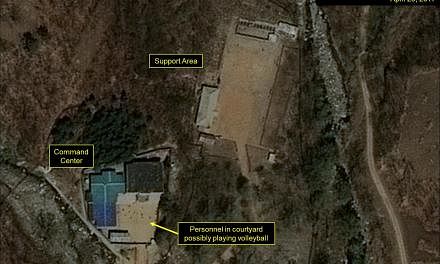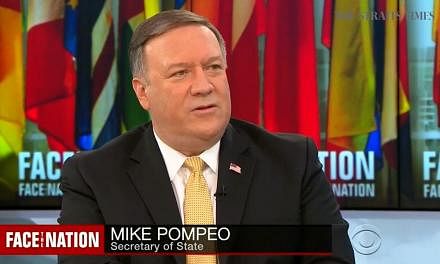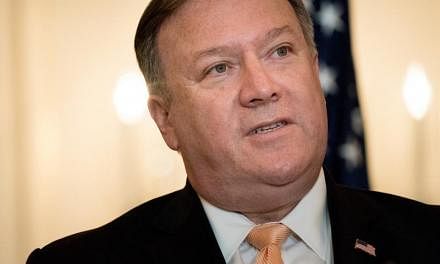SEOUL/WASHINGTON (Reuters) - North Korea has threatened to shoot down US bombers flying near the Korean peninsula, but it would have difficulty matching its words with action given ageing air defence systems mostly dating to the Cold War, military experts said.
In intensifying rhetoric between the United States and North Korea during the past week, President Donald Trump said the US would "destroy" the country if it threatened the U.S. or its allies.
Pyongyang's foreign minister Ri Yong Ho responded that Trump had "declared war" and North Korea reserved the right to take countermeasures, including shooting down US bombers, even if they were not in its air space.
In a show of force on Saturday, US Air Force B-1B Lancer bombers escorted by fighters flew east of North Korea, in what the Pentagon said was the farthest north of the Korean Demilitarized Zone that any US fighter jet or bomber has flown in the 21st century.
The supersonic B-1B bombers have elaborate electronic countermeasures and are usually escorted by four F-15 fighters, which are likely to prevail in any air combat with North Korea's ageing air force, said Bruce Bennett, a military expert at the Rand Corporation think tank.
"(And) if the North Koreans try to overwhelm the F-15 escorts by sending up dozens of their fighters, the United States will know that is happening, and would have the option of flying away from North Korea and heading towards Japan," Bennett said.
North Korea could attempt to fire surface-to-air missiles at the US aircraft, but its systems would barely have the range to strike targets outside of North Korean airspace, missile experts said.
"If US planes remain off-shore, they would be reasonably safe," said Michael Elleman, a missile expert at the International Institute for Strategic Studies.
Much less shoot them down, it is not even clear whether North Korea would be able to detect some modern-day US aircraft.
In 1969, North Korea MiG-21 aircraft did shoot down a US Navy EC-121 aircraft on a reconnaissance mission, which crashed 90 miles off the North Korean coast and killed all 31 Americans on board.
But that aircraft was of an aged design based on the Constellation airliner dating back to the 1940s.
The latest US fighter jets have stealth capability designed to avoid detection and North Korea's military is known to be incapable of operating radar systems around the clock because supplies of energy are low, South Korean government official said, asking not to be identified.
"Due to hurdles from sanctions and oil shortages, I'm not sure whether fighters would be able to even return from a mission," said Park Dae Kwang, an expert on North Korea's air defence at South Korea's state-run Korea Institute for Defense Analyses.
North Korea has roughly 810 fighter planes, according to South Korea's 2016 defence ministry white paper. But officials and experts say most of these, largely of old Soviet and Chinese origin, are severely outdated and have been plagued with accidents.
In 2014, three aged North Korean fighter jets crashed in training over the course of two months, according to South Korean officials at the time.
"I doubt very much that any of the North Korean aircraft would be successful taking on our fighter escorts," said David Maxwell of Center for Security Studies, the Walsh School of Foreign Service, Georgetown University.
Last week, North Korea seemed to be unaware that the US B-1B bombers had even been dispatched as it took no action to counter the US patrol at that time, a South Korean lawmaker who was briefed by South Korea's spy agency said on Tuesday.
Washington appeared to have disclosed the flight path of its B-1B bombers intentionally after the non response, the lawmaker said.
A Pentagon spokesman said: "We won't confirm what North Korea did or did not know about our B-1B flight on the 23rd, but the mission was completed without incident."
BEST SHOT?
In 1981, the North Koreans tried but failed to shoot down a US SR-71 Blackbird spy plane with a surface-to-air missile.
North Korea's best chance of shooting down a US plane would likely be with its KN-06 surface-to-air missile system, which its leader Kim Jong Un declared "perfect" in May after previous defects in earlier testing had been addressed.
The KN-06 appeared to be based on Russia's S-300 system with a range of about 150 km, said George Hutchinson, managing editor of the International Journal of Korean Studies, and a former US Air Force officer.
Hutchinson said it was a more advanced system and "presents concerns because it is a road-mobile transportable system - it can be moved around to enhance its effectiveness and survivability." However, it is not known how reliable the system is given it has only recently gone into operation, analysts said.
Another missile system, the SA-5, has a longer range of 250 km but it relies on old technology which US aircraft could beat, Rand Corp's Bennett said.
North Korea has deployed SA-5 and SA-2 surface-to-air missile systems near the inter-Korean border and on its east and west coasts, according to South Korea's defence ministry.
Some analysts said North Korea's comments on Monday may have been aimed more towards where the B-1B bombers usually come from - the US military base on the Pacific island territory of Guam, which Pyongyang has threatened to attack with its intermediate-range Hwasong-12 missiles.
The Pentagon said the B-1B bombers came from Guam and their fighter escorts came from Okinawa, Japan.
"They will probably try to strike US aircraft if they ever enter North Korean airspace, but their anti-aircraft missiles are limited," said Kim Dong Yub, a military expert and analyst at South Korea's Institute for Far Eastern Studies.
"I feel this is more closely linked to North Korea's previous threat they would hit the waters near Guam."
Missile expert Elleman said his main concern was that any North Korean defensive move could quickly lead to all-out conflict.
"What I worry about is North Korea 'painting' a US plane with a radar as if it were about to launch a weapon," he said.
"That might prompt a defensive reaction to suppress the air defences of North Korea, either electronically or kinetically. If North Korea fires something, the risks of miscalculation, escalation, grow enormously."

